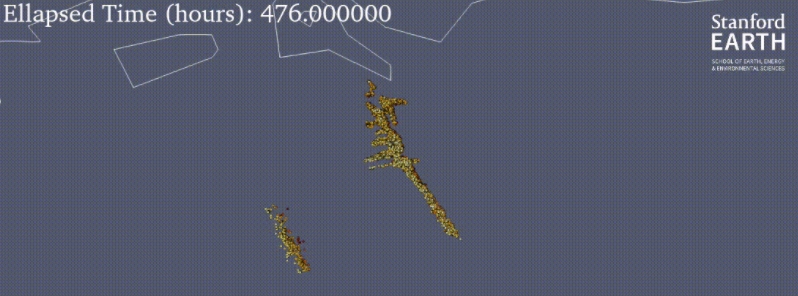New technology detects long-hidden earthquakes

Scientists at the Stanford School of Earth, Energy, and Environmental Sciences described a new method for using artificial intelligence to detect millions of long-hidden small earthquakes or microquakes, providing possible hints about how earthquakes evolve.
Big earthquakes are hard to miss, but they are rare. Meanwhile, small quakes occur all the time, on the same faults as larger tremors.
"By improving our ability to detect and locate these very small earthquakes, we can get a clearer view of how earthquakes interact or spread out along the fault, how they get started, even how they stop," said Stanford geophysicist co-author Gregory Beroza.
S. Mostafa Mousavi, a research scientist at Stanford and the lead author, said he started working on technology to automate earthquake detection soon after he examined daily seismograms in Memphis. However, his models struggled to tune out the noise necessary for seismic data.
After a few years, after joining Beroza's lab at Stanford, he planned on how to solve this problem using machine learning.
The group of scientists produced a series of increasingly powerful detectors. PhaseNet, a 2018 model developed by Beroza and graduate student Weiqiang Zhu, adapted algorithms from medical image processing to excel at picking phased. CRED, another machine learning model released in 2019, was inspired by voice-trigger algorithms.
Both models learned the basic patterns of earthquake sequences from a relatively small set of seismograms recorded in northern California. In their research, the authors reported that they have developed a new model to track microquakes with weak signals that current models usually overlook.
They call it Earthquake Transformer, which could allow scientists to focus on extracting data from a more complete catalog of earthquakes.
Understanding patterns of microquake accumulation over years could be key to minimizing damage when a bigger quake hits.
After the 1989 Loma Prieta quake– one of the most destructive in U.S. history and one of the largest to hit northern California in the past century, many communities in the state have come to depend on maps showing fault zones and areas where tremors are likely to cause the most damage.
With the Earthquake Transformer and other tools, those maps are made more precise, helping reveal faults that may otherwise only occur in the wake of the devastation from a bigger quake, like what happened with Loma Prieta.
"The more information we can get on the deep, three-dimensional fault structure through improved monitoring of small earthquakes, the better we can anticipate earthquakes that lurk in the future," said Beroza.
To test Earthquake Transformer, the team aimed to observe how it worked with quakes not included in training data, which included one million hand-labeled seismograms recorded mostly over the last 20 years where quakes happen globally, except for Japan.
The model detected 21 092 events– more than two and a half times the number of quakes recorded by hand, using data from only 18 of the 57 stations that Japanese scientists originally used. Earthquake Transformer was proven particularly effective for the microquakes that are harder for humans to track.
"Earthquake Transformer gets many more earthquakes than other methods, whether it's people sitting and trying to analyze things by looking at the waveforms, or older computer methods," said Stanford geophysics research professor and co-author, William Ellsworth.
"We're getting a much deeper look at the earthquake process, and we're doing it more efficiently and accurately."
Beroza added, "Earthquake monitoring using machine learning in near real-time is coming very soon."
Reference
"Earthquake transformer—an attentive deep-learning model for simultaneous earthquake detection and phase picking" – Mousavi, S. M. et al. – Nature Communications – https://doi.org/10.1038/s41467-020-17591-w
Abstract
Earthquake signal detection and seismic phase picking are challenging tasks in the processing of noisy data and the monitoring of microearthquakes. Here we present a global deep-learning model for simultaneous earthquake detection and phase picking. Performing these two related tasks in tandem improves model performance in each individual task by combining information in phases and in the full waveform of earthquake signals by using a hierarchical attention mechanism. We show that our model outperforms previous deep-learning and traditional phase-picking and detection algorithms. Applying our model to 5 weeks of continuous data recorded during 2000 Tottori earthquakes in Japan, we were able to detect and locate two times more earthquakes using only a portion (less than 1/3) of seismic stations. Our model picks P and S phases with precision close to manual picks by human analysts; however, its high efficiency and higher sensitivity can result in detecting and characterizing more and smaller events.
Featured image credit: Mousavi, et al.

Commenting rules and guidelines
We value the thoughts and opinions of our readers and welcome healthy discussions on our website. In order to maintain a respectful and positive community, we ask that all commenters follow these rules.